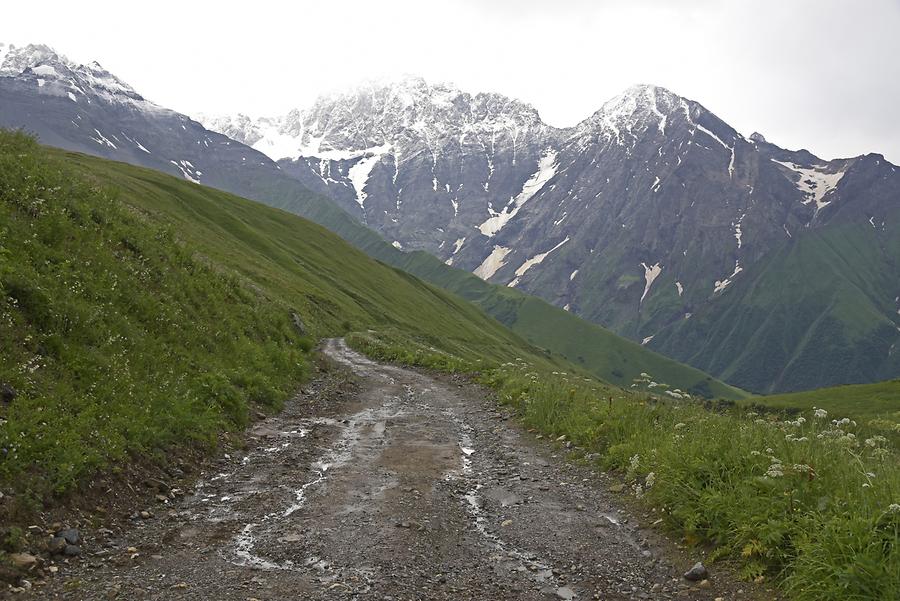Zagar Pass#

Zagar Pass, July 2018, © Gerhard Huber, under CC BY-NC 4.0 +Edu
Wer wilde Bergpisten nicht scheut, nähert sich der Kolchischen Tiefebene über den knapp 3000 m hohen Tsagar Pass
42.9155484,43.0998186
. Schöne Landschaften entlohnen für die mühsame Strecke.
Als Sonnenland bezeichneten die antiken Geschichtsschreiber die Kolchische Tiefebene zwischen Großem und Kleinem Kaukasus. In der Mitte liegt Kutaisi, die Hauptstadt des Königreiches der Kolchis, das im 7. vorchristlichen Jahrhundert aus einer griechischen Kolonie hervorging und bis zum 1. Jahrhundert v.d.Z. über Georgien herrschte. Wichtige Handelswege durch das Rioni-Flusstal brachten Reichtum und Wohlstand. Noch in Georgiens Blütezeit unter König Davit dem Erbauer war die Stadt das politische und kulturelle Zentrum des Landes. Erst als der Herrscher Tiflis von islamischen Invasoren zurückeroberte, zog er mit seinem Hofstaat wieder um. Trotzdem entstanden in Kutaisi vom 11. bis zum 13. Jahrhundert herausragende Bauwerke wie die Bagrati Kathedrale und der Klosterkomplex von Gelati..
Who does not dread wild mountain slopes can approach the colony's plain via the almost 3000 m high Tsagar Pass
42.9155484,43.0998186
. Beautiful landscapes are a reward for the arduous track.
The ancient historians called the colony lowland between the Greater and Lesser Caucasus "sunland". In the middle lies Kutaisi, the capital of the Kingdom of the Colchis, which emerged from a Greek colony in the 7th century BC and prevailed over Georgia until the 1st century BC. Important trade routes through the Rioni river valley brought wealth and prosperity. Even in Georgia's heydays under the rule of king Dawit the Builder, the city was the political and cultural center of the country. Only when the ruler recaptured Tbilisi from Islamic invaders, he moved back with his court. Nevertheless, in Kutaisi outstanding buildings such as the Bagrati cathedral and the monastery complex of Gelati were built from the 11th to the 13th century.